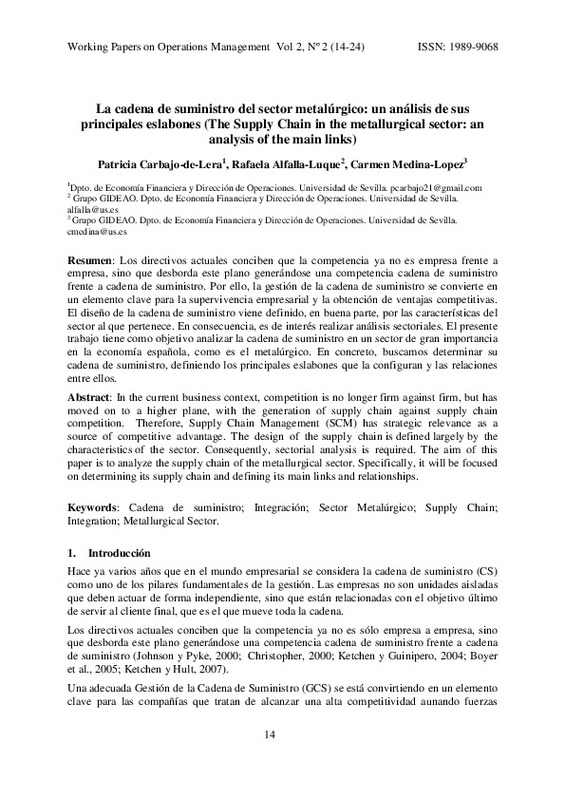JavaScript is disabled for your browser. Some features of this site may not work without it.
Buscar en RiuNet
Listar
Mi cuenta
Estadísticas
Ayuda RiuNet
Admin. UPV
La cadena de suministro del sector metalúrgico: un análisis de sus principales eslabones (The Supply Chain in the metallurgical sector: an analysis of the main links)
Mostrar el registro completo del ítem
Carbajo-De-Lera, P.; Alfalla-Luque, R.; Medina-Lopez, C. (2011). La cadena de suministro del sector metalúrgico: un análisis de sus principales eslabones (The Supply Chain in the metallurgical sector: an analysis of the main links). Working Papers on Operations Management. 2(2):14-24. https://doi.org/10.4995/wpom.v2i2.867
Por favor, use este identificador para citar o enlazar este ítem: http://hdl.handle.net/10251/15499
Ficheros en el ítem
Metadatos del ítem
| Título: | La cadena de suministro del sector metalúrgico: un análisis de sus principales eslabones (The Supply Chain in the metallurgical sector: an analysis of the main links) | |
| Otro titulo: |
|
|
| Autor: | Carbajo-de-Lera, Patricia Alfalla-Luque, Rafaela Medina-Lopez, Carmen | |
| Fecha difusión: |
|
|
| Resumen: |
[EN] In the current business context, competition is no longer firm against firm, but has
moved on to a higher plane, with the generation of supply chain against supply chain
competition. Therefore, Supply Chain Management ...[+]
[ES] Los directivos actuales conciben que la competencia ya no es empresa frente a empresa, sino que desborda este plano generándose una competencia cadena de suministro frente a cadena de suministro. Por ello, la gestión ...[+]
|
|
| Palabras clave: |
|
|
| Derechos de uso: | Reserva de todos los derechos | |
| Fuente: |
|
|
| DOI: |
|
|
| Editorial: |
|
|
| Versión del editor: | https://doi.org/10.4995/wpom.v2i2.867 | |
| Tipo: |
|








